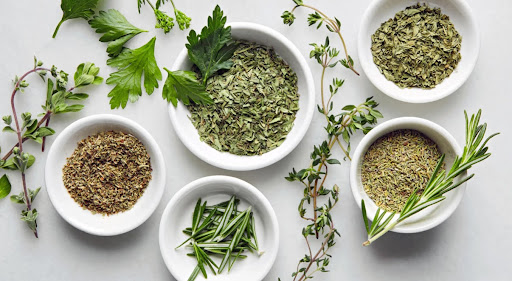Culinary School Hack: How to Use Fresh vs Dried Herbs Like a Pro
Hello Chefs,
This week’s kitchen hack is all about one of my favorite flavor boosters: herbs—specifically, the age-old question of fresh vs. dried.
If you’ve ever stared at a recipe and wondered, “Can I use dried oregano instead of fresh?” or “Is fresh basil really that different?”—this one’s for you.
Let’s talk about when to use fresh, when to use dried, how to substitute one for the other, and how to make the most of either version.

🌿
Fresh Herbs: When to Use Them
Fresh herbs shine brightest when they’re used at the end of cooking or added raw. Think of them as the perfume of your dish—they’re delicate, aromatic, and a little bit fancy.
Best for:
- Garnishing soups and pastas
- Tossing into salads or salsas
- Finishing off roasted meats or vegetables
- Any dish where the herb flavor should taste bright and clean
Common fresh stars: basil, parsley, cilantro, dill, chives, mint, tarragon
Tips for fresh herbs:
- Chop them just before using for the most flavor
- Store in a damp paper towel in the fridge, or like a bouquet in water (like flowers!)
- Delicate herbs (basil, mint) bruise easily—handle with love
🍃
Dried Herbs: When to Use Them
Dried herbs are more concentrated in flavor (since the water’s been removed), and they do their best work when given time to rehydrate and mingle with the other ingredients—usually early in the cooking process.
Best for:
- Long-simmered sauces and soups
- Roasted meats or vegetables
- Dry rubs, marinades, and spice blends
Tips for dried herbs:
- Crush them between your fingers as you add them to wake up the oils
- Store in a cool, dark cupboard in airtight jars
- Don’t keep dried herbs forever—they lose potency after about 6–12 months
🔁
How to Substitute Fresh and Dried Herbs
Here’s the magic ratio:
1 tablespoon fresh = 1 teaspoon dried
So if a recipe calls for 1 tablespoon of fresh thyme and you only have dried, use 1 teaspoon. And vice versa—if a recipe calls for 1 teaspoon dried oregano but you’ve got fresh, go for 1 tablespoon chopped.
Culinary School Tip:
Be careful swapping dried herbs for fresh in recipes where the herb is a big part of the flavor profile (like fresh basil in caprese). In those cases, fresh really does make a difference.
🌱
Bonus Hack: Freeze Your Fresh Herbs!
If you’ve got fresh herbs that are on their way out, chop them and freeze them in olive oil in an ice cube tray. You’ll have pre-portioned flavor bombs ready to go for soups, sautés, and sauces.
Herbs—fresh or dried—are one of the easiest ways to level up your cooking. Once you get the hang of which is which (and when to use them), you’ll find yourself cooking more intuitively and flavorfully every time.
Until next time, stay herbaceous and cook boldly!
 Brennah Van Wagoner
Brennah Van Wagoner
Weekly Newsletter Contributor since 2025
Email the author! brennah.oaks@gmail.com
